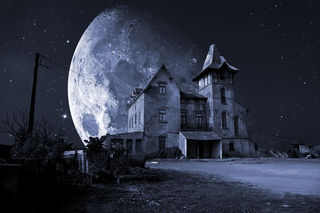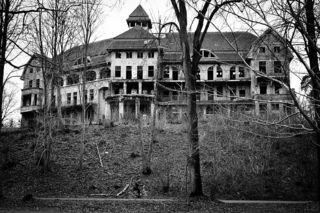Spirituality
Haunted Houses: What Keeps the Legends Alive?
Belief in haunted houses persists, in spite of the facts.
Posted December 9, 2016

I have written about how the architecture of haunted houses creeps us out in a previous Psychology Today blog post. However, I am also interested in exploring how easily people can be duped into believing that a place is really haunted. It seems as if everyone likes a good haunted house story, and a belief in the veracity of stories about haunted houses persists long after the facts of the case reveal them to be little more than a legend. In other words, accounts of paranormal events are able to withstand an assault from actual facts quite well.
In no case has this been more evident than in one of the most enduring ghost stories of our time, The Amityville Horror, which inspired a book and a series of movies.
On November 13, 1974, Ronald Defeo Jr. murdered six members of his family in his Dutch Colonial home at 112 Ocean Avenue in Amityville, New York. Defeo was convicted for his crime and sent to prison. In December 1975, the house was purchased by George and Kathy Lutz, but they and their three children lasted in the house for a mere 28 days before they were driven from their home in abject terror. A great many frightening and peculiar things happened to them during their brief stay, including plagues of flies—in midwinter!—Kathy levitating above her bed while she slept, the Lutz children beginning to sleep in the same positions in which the murdered corpses of the Defeo family had been found, green slime oozing from the walls, frequent sightings of a pig-like demon with glowing red eyes, an image of a demon burned into the fireplace, and George witnessing his young wife being turned into a hideous old hag right before his eyes. The Lutzes contacted a local priest to bless the house, and during the blessing the priest was slapped in the face by an unseen hand and he heard a loud voice warning him away. This story frightened the bejesus out of everyone who heard it because it was true!
Except that it wasn’t.
The Lutzes' account contradicted the account of the priest who had supposedly been involved in the incident, and all of the reported creepy happenings were embellishments at best, and more often, outright fabrications. In fact, the whole thing turned out to be a ruse concocted by the Defeos' attorney and George Lutz in order to turn a profit by writing a book about the incident. The fact that the entire affair was quickly revealed as a hoax did little to diminish the appetite for a book and a movie, and accounts of the haunting in the popular press kept the legend alive by glossing over inconvenient facts in favor of telling a good ghost story. One of the most well-known of these sympathetic media stories aired on Halloween night, 2002, on ABC’s Primetime Thursday.
So, a belief in tales of haunted houses may persist at least in part because of the public’s wish to believe—facilitated by a complicit media.

However, once a person believes that such events are possible, even well-intentioned individuals may hoodwink themselves into experiences that genuinely creep them out. A fascinating case study of just such a situation has been described by paranormal investigator Benjamin Radford.
Radford was contacted by a terrified woman near Buffalo, New York, in November of 2003. She was completely convinced that her house was haunted by ghosts or at least by some sort of evil spirit. She and her husband were contemplating moving because they could no longer stand the tension of living in a haunted house. They had been in the house about three years, and over time they saw an increase in what they believed to be paranormal activity. She and her husband slept in separate bedrooms because of his sleep apnea, and his room seemed to be particularly haunted. He experienced tapping on his feet as he was drifting off to sleep and on more than one occasion awakened when his bed was violently kicked by an unseen force. The family pets also seemed to be afraid to enter this room. The house was full of strange cold spots and the floors creaked throughout the night from the sounds of footsteps. They photographed the image of a demonic face on one of their tabletops, and a tape recorder they planted in the otherwise empty upstairs recorded the muffled sounds of conversation as well as animal noises. Downstairs, they frequently heard the sound of faint music and other unexplainable noises coming from empty upstairs rooms. The couple even summoned a priest to bless their house, but the haunting continued to get worse.
Radford, who worked for the Committee for the Scientific Investigation of Claims of the Paranormal in Amherst, New York, agreed to look into the case. He found the husband and wife to be normal, sincere people who were thoroughly frightened and creeped out by what was going on in their home. After a few weeks of experimentation and investigation, he discovered that the couple had inadvertently, but quite literally, haunted their own house. They fed each other’s fears by engaging in exactly the sort of self-confirming “top-down processing” that is well understood by cognitive psychologists. Once they believed that their house was haunted, any ambiguity that they experienced was resolved in the direction that was dictated by their fears, which in this case meant that there were ghosts running wild in their home.
The house was old, drafty, and poorly insulated. There were in fact “cold spots” that had a perfectly natural explanation, as did the creaky staircase, the mysterious music and voices, and the animal sounds. The couple had been completely unaware that sounds from people conversing on the street, dogs barking in the distance, and neighbors raking leaves filtered into the upstairs of the house and could be captured by a tape recorder. These things only sounded sinister when one did not know their origin and when one fully expected to hear ghosts. The demonic face on the table turned out to be the reflection of a lamp. Just as people can see the face of Jesus in a puddle of oil or an image of the Virgin Mary in a grilled cheese sandwich if that is what they expect to see, the random patterns in the reflection of a lamp can indeed be perceived as a demonic face. The tapping on the husband’s feet and the shaking of his bed turned out to be nothing more than the side effects of a very large man with sleep apnea twitching and shaking on a flimsy bed while he was sleeping.
In short, whether a place seems truly haunted can very much be in the mind of the beholder.
References
Christopher, K. (2003). The ABC-ville Horror. Skeptical Inquirer, 27, 53-54.
Radford, B. (2008). How to “haunt” a house. Skeptical Inquirer, 32, 31-36.


